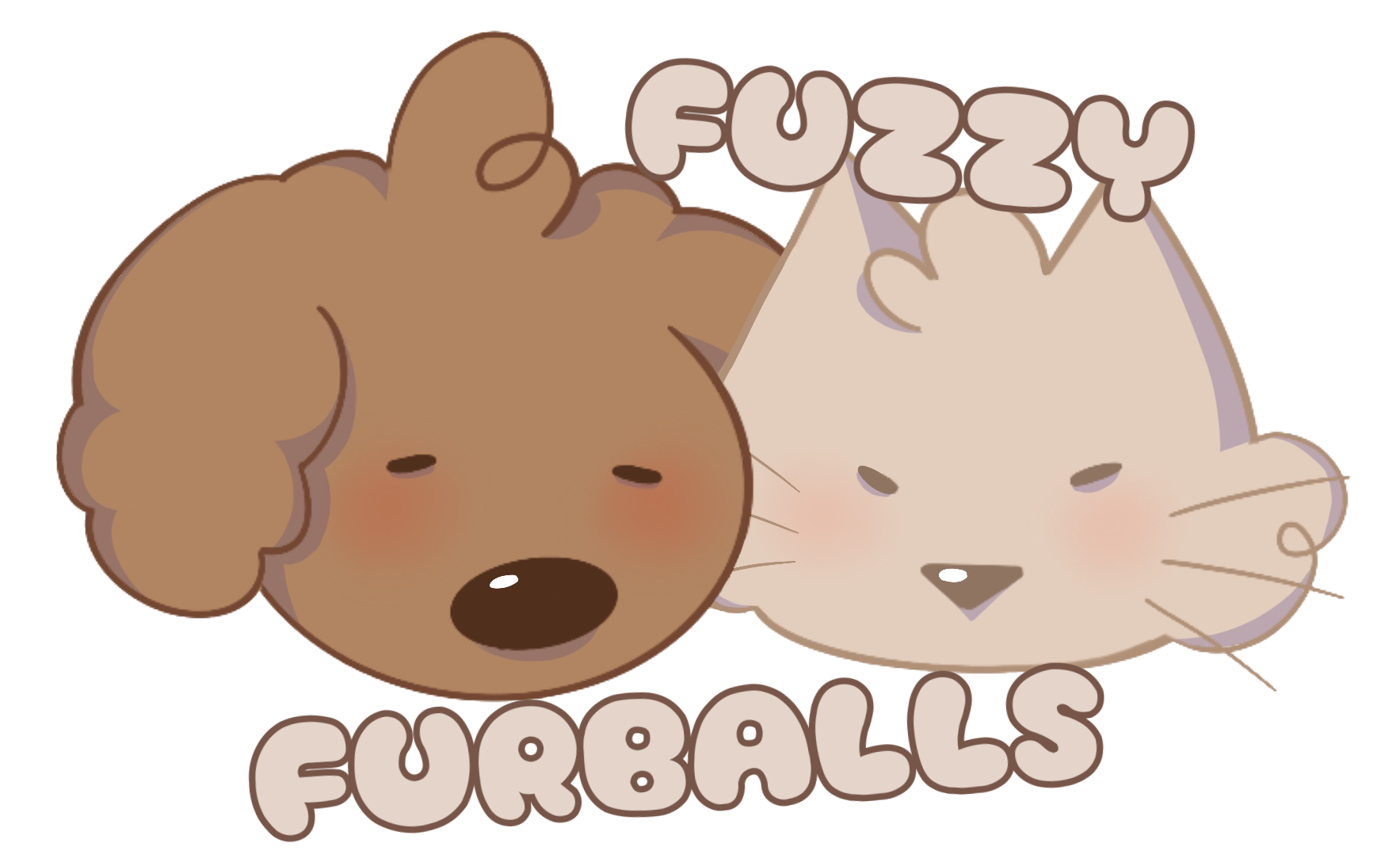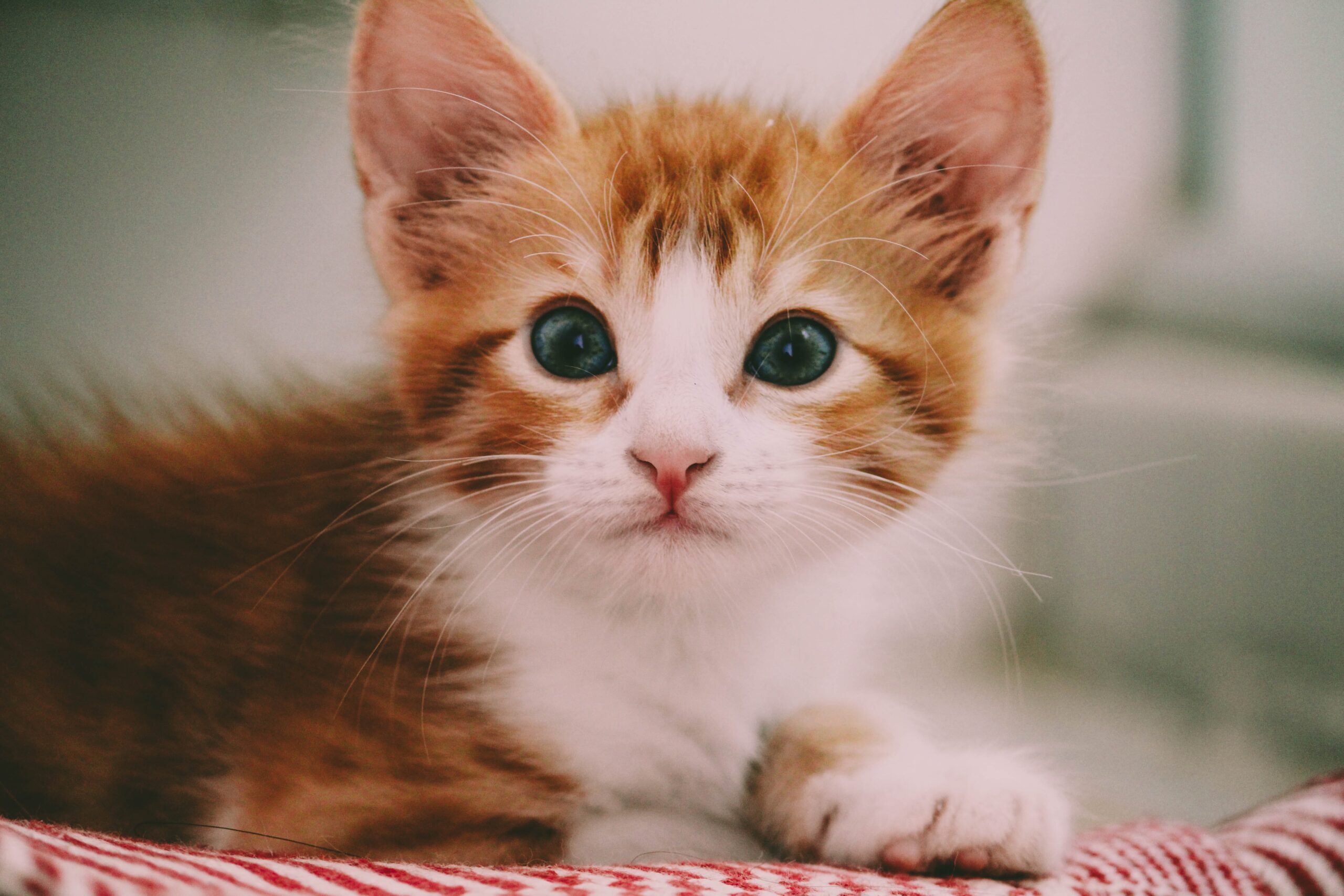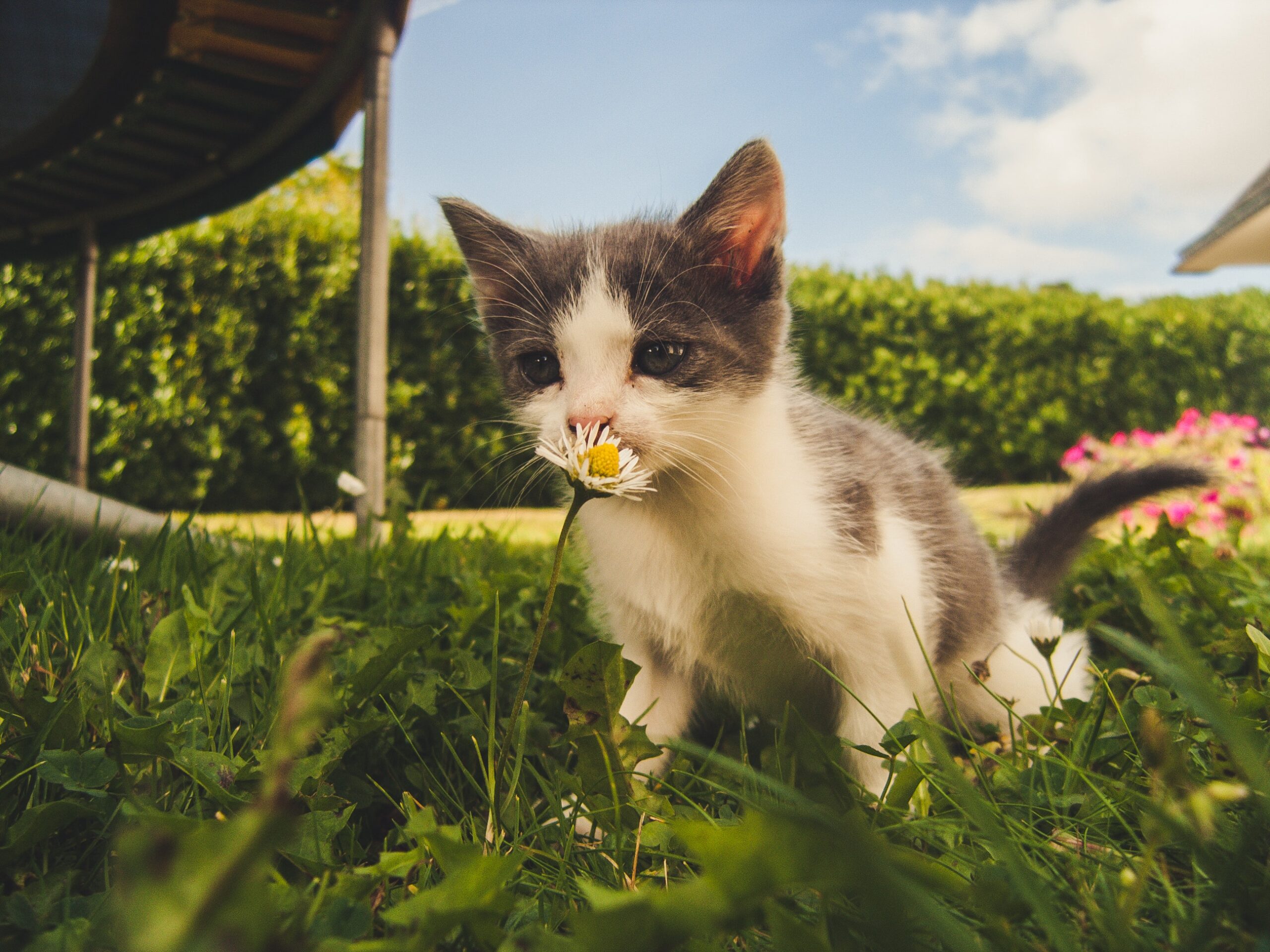The Importance of Playtime for Cats
Playtime is an essential aspect of a cat’s life, regardless of age or breed. Just like their wild ancestors, domestic cats have a natural instinct to hunt, chase, and explore. Engaging in regular play not only satisfies these instincts but also promotes physical exercise and mental stimulation. Playtime helps keep cats active and healthy, preventing obesity and related health issues. Additionally, interactive play can strengthen the bond between cats and their human companions, fostering a sense of trust and companionship.
The Benefits of DIY Cat Toys
DIY (Do-It-Yourself) cat toys offer numerous advantages for both cats and their owners. Firstly, they are cost-effective and budget-friendly, making playtime accessible to all cat owners. Crafting toys at home also provides an opportunity for creativity and personalization, tailoring toys to suit a cat’s unique preferences and playstyle. DIY toys can be made from simple household items, making them eco-friendly and reducing waste. Furthermore, homemade toys allow owners to control the materials used, ensuring they are safe and non-toxic for their feline friends.
Purpose of the Article: Providing Fun and Budget-Friendly Playtime Ideas for Cats
The purpose of this article is to inspire cat owners to embrace DIY cat toys and explore creative playtime ideas that can be easily crafted at home. By providing a variety of engaging and budget-friendly play options, the article aims to encourage cat owners to enrich their cats’ lives with stimulating activities. Whether the cat enjoys chasing, pouncing, or investigating, there will be a DIY toy idea to suit their preferences. Through this article, readers will discover the joy of bonding with their feline companions while promoting their physical and mental well-being.
Understanding Cat Play Behavior
Explaining the Importance of Play for Cats’ Physical and Mental Well-Being
Play is a fundamental aspect of a cat’s life that contributes to their overall health and happiness. Engaging in playtime allows cats to release pent-up energy, promoting physical exercise and preventing obesity. Regular play also helps maintain their agility, muscle tone, and coordination. Beyond the physical benefits, playtime is crucial for cats’ mental stimulation and emotional well-being. Play mimics hunting behaviors seen in their wild ancestors, fulfilling their natural instincts and reducing stress. It also provides an outlet for boredom, preventing destructive behaviors and promoting a well-balanced and contented cat.
Identifying Different Types of Play Behavior in Cats
Cats exhibit various play behaviors that may vary from one individual to another. Some common types of cat play behavior include:
- Chasing and Pouncing: Cats love to chase and pounce on moving objects, simulating the thrill of hunting prey. Quick and unpredictable movements appeal to their predatory instincts.
- Batting and Swatting: Cats enjoy batting at toys or objects with their paws, honing their hunting skills and satisfying their curiosity.
- Investigative Play: Cats are curious creatures and enjoy exploring new environments or objects. Toys that encourage investigation and discovery can be highly engaging.
- Interactive Play: Many cats enjoy interactive play with their human companions. Toys that facilitate interactive play strengthen the bond between cats and their owners.
- Stalking and Ambushing: Cats often engage in stalking behaviors, slowly approaching their target before launching an ambush. DIY toys can be designed to cater to this specific play style.
How DIY Toys Can Cater to Specific Play Preferences
The beauty of DIY cat toys lies in their versatility and adaptability to suit a cat’s individual play preferences. For a cat that enjoys chasing, homemade wand toys with feathers or ribbons can mimic the movement of prey. Cats that love batting and swatting might enjoy crumpled paper balls or knotted fabric strips. For those with a penchant for investigative play, cardboard boxes filled with treats or hidden toys can provide hours of entertainment. Interactive DIY puzzle toys can challenge cats mentally and reward them with treats for solving the puzzle. By understanding a cat’s unique play style, DIY toys can be tailored to provide enriching and enjoyable playtime experiences.
Through a deeper understanding of cat play behavior, cat owners can better cater to their feline companion’s needs and preferences. The DIY cat toys suggested in this article will not only promote physical and mental well-being but also create fun and lasting memories between cats and their loving owners.
Safety Considerations
Using Safe and Non-Toxic Materials for DIY Cat Toys
Safety is paramount when crafting DIY cat toys. It is essential to use materials that are safe and non-toxic for feline companions. Avoid using any items that contain harmful chemicals, paints, or adhesives that could be ingested or cause skin irritations. Opt for pet-safe materials such as untreated wood, natural fibers, and food-grade dyes. Be cautious when repurposing household items; ensure they are free from any harmful substances that could harm the cat.
Avoiding Small Parts That Could Be Swallowed or Pose Choking Hazards
When creating DIY cat toys, always steer clear of small parts or loose components that could be swallowed or pose choking hazards. Cats are curious creatures, and they might attempt to chew or swallow small objects during playtime. Use larger, sturdy materials that cannot be easily broken apart. Secure all parts firmly to the toy to prevent accidental detachment. Pay special attention to items like buttons, beads, or small bells, as they can be potential choking hazards for cats.
Regularly Inspecting and Replacing Worn-Out Toys to Prevent Accidents
DIY cat toys, like any other toys, will experience wear and tear over time. Regularly inspect the condition of the toys and replace any worn-out or damaged items promptly. Frayed fabric, loose threads, or broken components can pose risks to the cat during play. Ensuring that toys are in good condition helps prevent accidents such as ingestion of small pieces or injuries from broken toys.
As responsible cat owners, prioritizing safety during playtime is crucial to keep our feline companions out of harm’s way. By using safe materials, avoiding small parts that could be swallowed, and regularly inspecting and replacing worn-out toys, we create a safe play environment that enhances the joy and well-being of our beloved cats. DIY cat toys can provide endless fun and entertainment, but it’s equally essential to ensure they are created with the highest regard for our furry friends’ safety.
DIY Cat Toys Using Household Items
Making Use of Cardboard Boxes for Interactive Play
Cardboard boxes are not only a common household item but also a source of endless fun for cats. Instead of discarding old cardboard boxes, repurpose them into engaging play structures. Cut holes or windows in the sides to create peek-a-boo spots for your cat to explore. You can stack boxes to form a multi-level maze for climbing and hiding. Cats love to explore confined spaces, and cardboard boxes provide a sense of security while satisfying their natural instincts to investigate and stalk prey.
Creating Paper Ball Toys for Chasing and Pouncing
Paper ball toys are simple and budget-friendly DIY toys that are sure to capture your cat’s attention. Crumple up a sheet of plain paper or use old newspaper to create small balls. Cats will love the crinkly sound and lightweight texture, encouraging them to chase and bat the paper balls around. For added excitement, sprinkle some catnip on the paper balls to make playtime even more enticing. This DIY toy is an excellent way to stimulate your cat’s hunting instincts and promote active play.Crafting Simple Yarn and Fabric Wand Toys
Yarn and fabric wand toys are classic DIY cat toys that provide interactive playtime for both cats and their owners. Attach a colorful fabric strip or a long piece of yarn to the end of a stick or dowel rod securely. Wave the wand gently in front of your cat, encouraging them to engage in playful hunting behavior. Cats will leap, pounce, and bat at the enticing fabric, promoting physical exercise and mental stimulation. Make the experience even more enjoyable by incorporating feathers or crinkly materials into the fabric strips.
DIY cat toys using household items offer an economical and creative way to enrich your cat’s playtime. By repurposing cardboard boxes, creating paper ball toys, and crafting yarn and fabric wand toys, you provide your feline friend with engaging and entertaining play experiences. Remember to supervise your cat during playtime and store DIY toys safely when not in use. With a bit of creativity and a few household items, you can foster hours of fun and excitement for your beloved furry companion.
Upcycled and Repurposed DIY Cat Toys
Transforming Old Socks into Catnip-Filled Playthings
Give new life to old socks by turning them into irresistible catnip-filled toys. Fill a clean, discarded sock with catnip and tie a knot at the open end to create a simple catnip pouch. Cats are naturally drawn to the scent of catnip, and this DIY toy will entice them to play and roll around with the sock. The texture of the fabric also adds a tactile element that many cats find appealing. Not only is this DIY toy a sustainable option, but it’s also a fantastic way to recycle and repurpose items that might otherwise go to waste.
Repurposing Wine Corks for Batting and Tossing Games
If you have any leftover wine corks lying around, consider transforming them into engaging cat toys. Attach a small, lightweight feather or fabric strip to one end of the wine cork. Cats will love swatting and chasing the toy as it rolls across the floor. The combination of the cork’s weight and the dangling fabric or feather will pique your cat’s interest, encouraging playful and interactive behaviors. Just make sure the cork is securely attached to avoid any potential hazards during playtime.
Crafting DIY Treat-Dispensing Toys from Plastic Bottles
Plastic bottles can be repurposed into clever treat-dispensing toys that provide mental stimulation for your cat. Take a clean, empty plastic bottle, and make small holes in the sides using a craft knife or scissors. Fill the bottle with your cat’s favorite treats and replace the cap securely. As your cat bats and rolls the bottle, the treats will tumble out through the holes, rewarding them for their play efforts. This DIY toy engages your cat’s problem-solving skills as they figure out how to access the treats, making playtime both enjoyable and mentally enriching.
By upcycling and repurposing household items, you can create environmentally friendly and engaging DIY cat toys. Transforming old socks into catnip-filled playthings, repurposing wine corks for batting and tossing games, and crafting treat-dispensing toys from plastic bottles offer endless fun and entertainment for your curious feline companion. These DIY toys not only provide mental and physical stimulation but also contribute to a greener and more sustainable environment. As you observe your cat enjoying these upcycled delights, you’ll find satisfaction in knowing that you’re promoting eco-conscious play for a happy and healthy cat.
Catnip and Herb-Infused DIY Toys
Making Catnip-Stuffed Felt Mice for Hunting Instincts
Catnip-stuffed felt mice are a classic and beloved DIY toy that taps into a cat’s natural hunting instincts. Create a mouse-shaped template from felt fabric and cut out two identical pieces. Sew the edges together, leaving a small opening to stuff with catnip. You can use fresh or dried catnip to fill the mouse, depending on your cat’s preference. Once filled, sew the opening closed, and you have a delightful catnip-infused toy ready for playtime. Cats will relish the opportunity to bat, chase, and “hunt” their felt mouse, providing them with a rewarding and enjoyable play experience.
Infusing Toys with Cat-Friendly Herbs like Valerian or Silver Vine
Catnip isn’t the only herb that can excite and entertain cats. Consider using herbs like valerian or silver vine to create a unique and enticing DIY toy. Similar to catnip, these herbs produce a stimulating effect in cats, encouraging play and interaction. Infuse fabric strips or small fabric pouches with the dried herb of your choice. Attach the infused strips to a wand or simply toss them on the floor for your cat to explore. Cats that may not respond to catnip often react positively to these alternative herbs, broadening the range of fun playtime options.
Using Dried Catnip in Sock Sachets or Fabric Pouches
Dried catnip can be used in a variety of DIY toys, including simple sock sachets or fabric pouches. Fill a clean sock or small fabric pouch with dried catnip and tie it securely. Cats will be captivated by the scent of the catnip, and they will happily bat and roll the sachet or pouch around. For added excitement, toss the catnip-filled toy in the air to encourage your cat’s playful leaps. These easy-to-make toys offer a budget-friendly way to provide your feline friend with endless moments of amusement.
Catnip and herb-infused DIY toys offer a delightful twist on traditional playtime for your cat. Making catnip-stuffed felt mice, infusing toys with cat-friendly herbs like valerian or silver vine, and using dried catnip in sock sachets or fabric pouches provide fresh and engaging experiences for your feline companion. Whether it’s the allure of catnip or the intrigue of alternative herbs, these DIY toys are sure to bring joy and excitement to your cat’s playtime while tapping into their innate instincts and promoting a happy and healthy lifestyle.
Incorporating Sounds and Textures
Crafting Crinkle Paper Toys to Engage a Cat’s Curiosity
Crinkle paper toys are a wonderful way to excite your cat’s curiosity and provide auditory stimulation during play. Gather a piece of crinkly material, like the wrapper from a potato chip bag or special pet-safe crinkle paper, and stuff it inside a small fabric pouch or sew it between layers of fabric. As your cat bats and plays with the crinkle paper toy, the satisfying sound of crinkling will captivate their attention, encouraging playful behaviors and promoting interactive fun.
Making Jingle Bell Balls for Auditory Stimulation
Jingle bell balls are delightful DIY toys that offer both auditory and tactile stimulation for your cat. Take a small, lightweight ball, such as a ping-pong ball, and insert a jingle bell inside. Seal the hole securely to prevent the bell from falling out. The gentle sound of the jingle bell will intrigue your cat, enticing them to bat and chase the ball around. The combination of sound and movement will provide hours of entertainment and encourage your cat’s natural hunting instincts.
Experimenting with Different Fabric Textures for Tactile Play
Engage your cat’s sense of touch by experimenting with various fabric textures in DIY toys. Create fabric strips or small pouches using different materials, such as fleece, velvet, or burlap. Cats love exploring different textures with their paws and mouths, so offering a variety of tactile experiences will keep them intrigued and entertained. You can attach the fabric strips to a wand or simply scatter the pouches on the floor for your cat to explore. The tactile play will provide a rich sensory experience that complements their playtime.
Incorporating sounds and textures into DIY cat toys adds an extra layer of excitement and enrichment to your cat’s playtime. Crafting crinkle paper toys, making jingle bell balls, and experimenting with different fabric textures cater to your cat’s natural instincts and sensory preferences. These engaging toys not only provide auditory and tactile stimulation but also enhance the overall play experience for your feline companion. As you offer these interactive and multi-sensory toys, you’ll witness your cat’s enthusiasm and enjoyment as they play, creating cherished moments of bonding and happiness between you and your furry friend.
Engaging DIY Laser Pointer Alternatives
Using Flashlights or Smartphone Apps for Interactive Play
Laser pointers can be a source of endless fascination for cats, but there are safer alternatives that provide equally enjoyable playtime. Instead of using a laser pointer, opt for a flashlight with a focused beam or a smartphone app that projects a moving dot on the floor or wall. Your cat will still love chasing the light, and you can control the movement and intensity to ensure safe play. Remember to avoid shining the light directly into your cat’s eyes to protect their vision.
Creating Reflective Toys with Everyday Objects
DIY reflective toys are an exciting way to keep your cat entertained and engaged. Attach reflective materials, such as aluminum foil or reflective tape, to everyday objects like cardboard or plastic. When you move the object, the light will bounce off the reflective surface, creating an enticing moving target for your cat to chase. This simple DIY toy provides mental and physical stimulation and can be easily customized to match your cat’s preferences.
Tips for Avoiding Overstimulation and Providing Cooldown Periods
While interactive play is essential for your cat’s well-being, it’s crucial to avoid overstimulation, which can lead to frustration or stress. To prevent this, offer cooldown periods during play sessions. After an intense play session, switch to a calm and relaxing activity, like gentle petting or providing treats. Additionally, always observe your cat’s body language for signs of fatigue or disinterest. If your cat starts losing interest or seems overwhelmed, it’s time to give them a break and let them rest.
Engaging DIY laser pointer alternatives offer safe and enjoyable playtime options for your cat. Using flashlights or smartphone apps, creating reflective toys with everyday objects, and incorporating cooldown periods ensure that playtime remains stimulating, interactive, and fulfilling for your feline companion. By providing a diverse range of play experiences and being attentive to your cat’s needs, you can create a fun and enriching environment that fosters a happy and healthy relationship with your beloved pet.










